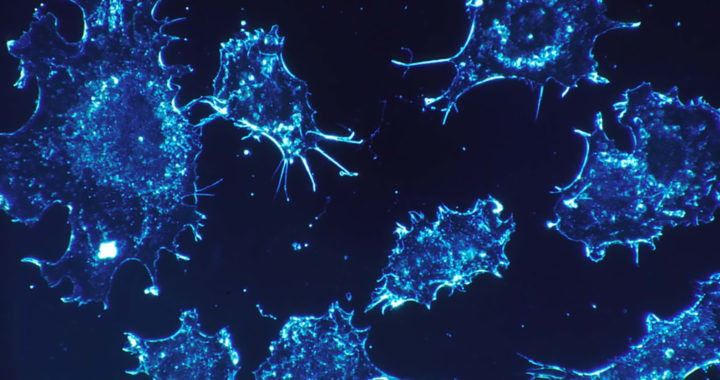The link between multicellularity and the origin of cancer can be understood by a pressing hypothesis suggesting that carcinogenesis or the tendency of cells to proliferate without control has been around since the origin of multicellular life.
Multicellularity is defined as the capacity of cells to cooperate and organize differentiate, specialize, and arrange themselves into functional tissues and organs. It is essentially a condition or state of having composed of more than one cell performing different functions and having different characteristics.
Cancer is the opposite. During carcinogenesis, cancerous cell behaves differently from normal cells by dividing uncontrollably to form lumps of tumor that endangers the integrity of a tissue or organ within a multicellular organism.
Studies Explaining Multicellularity and the Origin of Cancer
Cancer as the Reversal of Multicellularity
Several studies have hypothesized that multicellular life originated from unicellular organisms. Various theories further explain how this transition came to be. For example, the colonial theory of multicellularity suggests that multicellular life originated from the colonies of ancient similar unicellular species. Cellular differentiation and cooperation subsequently existed within this colony before gradually evolving into a single multicellular organism.
Cancer seems to be a reversal of multicellularity. Several studies have discussed, explored, and compared the association between the biological functions and mechanisms, as well as the operational definitions of multicellularity and carcinogenesis.
In addition, it is also important to take note of the fact that cancers are caused by faulty genes, particularly by mutations in two classes of genes called the proto-oncogenes that are responsible for regulating cell growth and tumor suppressor genes that are responsible for slowing down cellular division rate and programming cellular lifespan.
Researchers H. Chen, F. Lin, K. Xing, and S. He described carcinogenesis as the reverse evolution from multicellularity to unicellularity. They studied the whole-life history of a xenograft tumor and demonstrated how positive selection for general loss-of-function mutations on genes related to the regulation of cellular differentiation drive metastasis or the spread of cancer from one organ to another.
Expression analyses further revealed the downregulation of multicellularity-related genes and an evolving cellular expression profile that shares similarities with embryonic stem cells. It is worth mentioning that an embryonic stem cell resembles unicellular life because it also has the capacity for unlimited clonal proliferation.
An elevated birth rate of cancer genes has been associated with the emergence of animal life about 600 million years ago. The study also found that a typical tumor has more loss-of-function tumor suppressors than activated oncogenes.
A Further Look Into the Ancient Origin of Cancer
The aforementioned study of H. Chen, F. Lin, K. Xing, and S. concluded that cancer represents a loss-of-function-driven reverse evolution back to the unicellular. Moreover, another study by P. C. W. Davies and C. Lineweaver mentioned that genes of cellular cooperation that evolved with multicellularity about a billion years ago are the same genes that malfunction to cause cancer.
It has been hypothesized that carcinogenesis is an atavistic condition occurring when a genetic or epigenetic malfunction unlocks an ancient toolkit or mechanism involving pre-existing adaptations. This unlocking re-establishes the dominance of an earlier layer of genes that controlled loose-knit colonies of only partially differentiated cells, similar to tumors.
Because the mechanism responsible for turning a healthy cell into a cancerous cell has been existing before and during the early days of multicellular life, Davies and Lineweaver further noted that cancer is not a newly evolved biological condition. Cancer cells are heirs to an ancient toolkit and a basic mode of survival that is deeply embedded in multicellular life.
Virtually every healthy multicellular animals have cancer mechanisms or pathways that remain active. Examples of these are those used in embryogenesis and wound healing. Other pathways remain dormant within genomes awaiting activation.
Cancer cells can easily be regarded as a type of living fossil from the era when the first generation of animal life emerged and lived. Multicellularity and carcinogenesis seem inseparable conditions based on this starling atavism hypothesis of Davies and Lineweaver.
Link Between Multicellularity and Carcinogenesis In A Nutshell
There is undeniably an interesting association between multicellularity and the origin of cancer. The referenced studies describe multicellularity as a condition characterized by the emergence of cell differentiation while maintaining cooperation needed to form and maintain tissues with varying functions within a multicellular system. The biological integrity of a multicellular organism remains intact due to cooperation.
Cancer is the opposite condition of multicellularity. The studies referenced above suggest that cancer is a reverse evolution from multicellularity to unicellular. They also describe cancer as a loss of multicellularity.
Multicellularity and carcinogenesis thereby seem to be inevitably associated. Cooperation among cells leads to a multicellular system but the absence of this cooperation promotes carcinogenesis and tumor growth that lead to the development of cancer.
The key takeaways from exploring the association between multicellularity and the origin of cancer center on advancing current understanding about the nature of cancer that could lead to the identification of possible therapies.
Davies and Lineweaver suggested that instead of attacking tumors indiscriminately through radiotherapy or chemotherapy, understanding their origin, managing them, and containing them might be a better strategy. H. Chen, F. Lin, K. Xing, and S. He suggested that their model might account for intertumoral or intratumorally genetic heterogeneity that could explain distant-organ metastases and hold implications for cancer therapy.
FURTHER READINGS AND REFERENCES
- Aktipis, C. A., Boddy, A. M., Jansen, G., Hibner, U., Hochberg, M. E., Maley, C. C., and Wilkinson, G. S. 2015. “Cancer Across the Tree of Life: Cooperation and Cheating in Multicellularity.” Philosophical Transactions of the Royal Society B: Biological Sciences. 370(1673): 20140219. DOI: 1098/rstb.2014.0219
- Chen, H., Lin, F., Xing, K., and He, X. 2015. “The Reverse Evolution from Multicellularity to Unicellularity During Carcinogenesis.” Nature Communications. 6(1). DOI: 1038/ncomms7367
- Davies, P. C. W. and Lineweaver, C. H. 2011. “Cancer Tumors as Metazoa 1.0: Tapping Genes of Ancient Ancestors.” Physical Biology. 8(1): 015001. DOI: 1088/1478-3975/8/1/015001

